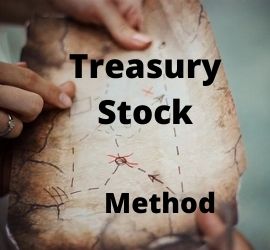What Is a Traunch?
 A Traunch is one portion in a series of allotments or payments. Usually, for a specific purpose with measured objectives required for future payments
A Traunch is one portion in a series of allotments or payments. Usually, for a specific purpose with measured objectives required for future payments
A traunch is one of a series of payments or allotments scheduled to be paid out over a specified period. Future payments are often subject to achieving certain performance metrics. It is commonly used in finance and venture capital (VC) when referring to the fundraising rounds used to finance startup companies. The term traunch originates from the French word tranche which means to slice or to cut.
In banking and finance, a traunch refers to splitting or dividing payments. For example, if the bank agrees to traunch your personal loan, it means it will fund the loan based on allotments. Investors, banks, and other lenders use a traunch format to limit risk when providing loans or funding to individuals or companies.
Traunch payments to fund startups let investment banks ensure that the borrower makes proper use of the funds. Usually, certain measurable results must be performed and achieved before the next traunch is released. For example, a VC agrees to fund a promising startup business of $2,000,000 in seed financing. However, the VC may divide it up into a traunch of four allotments of $500,000 split up over two years. Each installment is only released based on accomplishing certain milestones or measurable financial goals.
Traunch Funding – A Deeper Look
Investors always look to limit investment risks. This is particularly true when funding startup companies. A traunch schedule with allotted payments allows venture capitalists to limit risk by parceling their capital contributions into separate releases. For example, a startup company might wish to receive $10 million in financing. Providing the full amount upfront is one possibility. However, the investor might offer a deal where the $10 million is a traunch split into five allotments over two years. $4 million today and the remaining $6 million paid in four installments of $1.5 million every six months. Of course, the future allotments are subject to achieving clearly specified performance milestones.
From the investor’s perspective, dividing an investment into a traunch reduces risk. It allows the investor to withhold future funding until the company demonstrates progress in its business objectives. Performance targets can be identified relating to product development, revenue targets, additional fundraising, or minimum profitability. Companies are given time in which to achieve the targets set out in each allotment with clearly identified goals.
Traunch vs Tranche
As nouns, the difference between traunch and tranche is subtle. A traunch is one of a series of allotments or funds for a specific purpose. On the other hand, a tranche is a slice, section, or portion.
Traunch
A tranche is one of a series of related payments offered as part of the same transaction in finance. The word tranche is French for a slice, section, series, or portion. In the financial sense of the word, each payment release is a different slice of the deal’s total funding. The term traunch is used in fields of finance other than structured finance, such as in straight lending, where multi-traunch loans are provided.
Tranche
In structured finance, a tranche is one of several related securities offered as part of a larger offering. Tranches are a collection of securities that are separated and grouped based on various characteristics. Tranches can have different maturities, credit ratings, and yields, or interest rates. A credit rating is an assessment of the issuer’s ability to repay the bond or financial instrument. The financial instruments that can be broken up into tranches include loans, bonds, mortgages, and insurance policies.
Traunch Funding Examples
- Startup seed funding – An investor could invest a total of $500,000 and split their payments into three allotments of $100,000, $1500,000, and $250,000. The investment increases as the business achieve mutually agreed milestones. This reduces risks for both the startup and investors. All payments are usually part of the same series or round of investments.
- Loan funding – A bank offers a commercial loan to a small business and then splits it into a traunch to avoid risk. Each traunch can then be sold to investors, and many investors run specialized companies. If the business repays the loan on time, investors get the money from their original investment plus a high amount of interest. A tranch can have five, ten, or twenty-year terms. Longer terms earn the most, but they’re riskier. If a borrower defaults, investors only receive part of their original investment.
A seed-round investment usually gives a business 18 months of capital. At the end of 18 months, the company either starts to make a profit or starts to issue Series A stock to investors. With shorter tranche investment periods, founders often emphasize positive news for investors. The pressure can be significant on new companies. Some startups even feel pressured to cheat on their financial reports to investors. (Source: upcounsel.com)
Traunch Funding Favors Investors
A Traunch with staggered payments is an advantage for the investor. Venture capitalists get a chance to see how a startup performs before putting in the additional money. If the company does well, the later parts of the investment are a better deal. Why? Because the company is worth more as it achieves milestones. However, the investor is buying the equity at the previous valuation. There are a few more nuances to consider. However, traunch funding often works out quite well for the investor.
- Startups burn cash – Entrepreneurs almost always operate, and spend, as if the later rounds of the funding are guaranteed. This creates challenges to meet objectives at any cost. There is huge financial leverage if the business doesn’t perform as expected.
- Investors control the purse strings – Entrepreneurs are beholden to the investor for the later rounds of funding. There is always the incentive for startups to spin or filter the news to make things sound more promising. There is the conflict of ensuring that the next round of money comes in. Also, this can distract from growing the business
- Shorter timeframe for milestones – Traunch funding can be more distracting. With three to six months between milestones, there is greater pressure. Conversely, typical rounds of financing without staggered payment schedules usually have 12-24 months between rounds.
- Investors get a valuation bonus – From a valuation perspective, a traunch usually funds based on the current valuation. In reality, the projected valuation usually improves as the later milestones are achieved. As a result, the investor gets a bonus as the company performance improves.
Entrepreneurs typically want to avoid a traunch scenario and focus on negotiating a fixed investment amount upfront. This clearly identifies how much money and time they have to grow the business before raising another round.
Up Next: What Is the Treasury Stock Method?
 The Treasury stock method is used to compute the number of new company shares that can be created from existing in-the-money warrants or options.
The Treasury stock method is used to compute the number of new company shares that can be created from existing in-the-money warrants or options.
The treasury stock method is an accounting procedure. Companies use it to compute the number of new shares they can potentially create if they exercised in-the-money warrants and options. This only matters when the exercise price is less than the current share price. Potential shares obtained through the treasury stock method factor into the calculation of the diluted earnings per share (EPS).
The treasury stock method assumes that the money obtained by the company from exercising in-the-money options is used for stock repurchases. Repurchasing those shares turns them into treasury stock. This is where the method gets its name.




